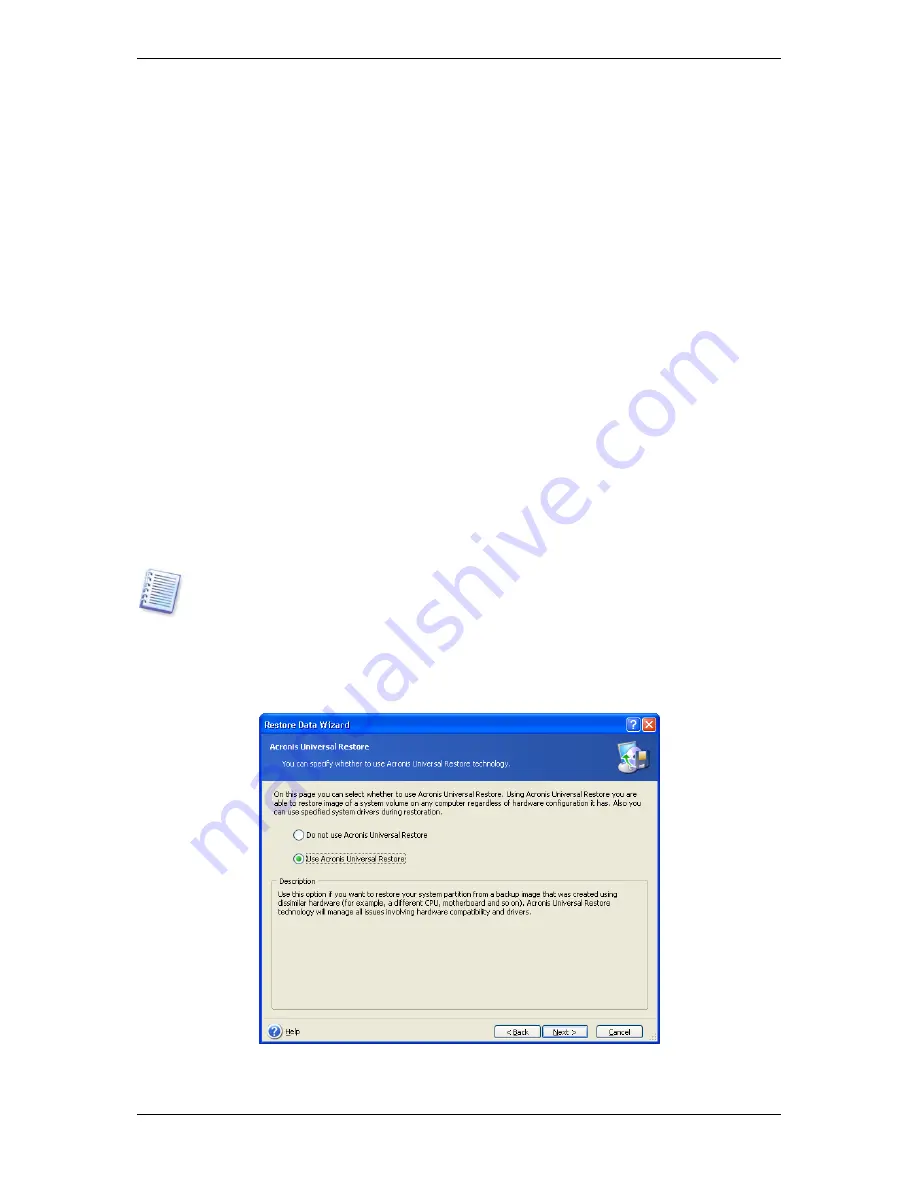
68 Copyright © Acronis, Inc., 2000-2007
7.3.9 Assigning a letter to the restored partition
1. Acronis True Image Enterprise Server will assign an unused letter to a restored partition.
You can select the desired letter from a drop-down list. If you set the switch to
No
, no
letters will be assigned to the restored partition, hiding it from OS.
You should not assign letters to partitions inaccessible to Windows, such as to those other
than FAT and NTFS.
2. Click
Next
.
7.3.10 Restoring several disks or partitions at once
1. During a single session, you can restore several partitions or disks, one by one, by
selecting one disk and setting its parameters first and then repeating these actions for every
partition or disk to be restored.
If you want to restore another disk (partition), select
Yes, I want to restore another
partition or hard disk drive
. Then you will return to the partition selection window (7.3.4)
again and will have to repeat the above steps. Otherwise, don’t set this switch.
2. Click
Next
.
7.3.11 Using Acronis Universal Restore
Acronis Universal Restore is an add-on to Acronis True Image Enterprise Server. It is
purchased separately and installed from a separate setup file. The following is for Acronis
True Image Enterprise Server installations including Acronis Universal Restore.
The Acronis Universal Restore option does not work if the image contains dynamic disks and
volumes.
1. Using Acronis Universal Restore will help you create a bootable system clone on a
different hardware (for more information see
3.7 Acronis Universal Restore
). Choose this
when restoring a system disk to a computer with other processor, motherboard or mass
storage device than in the imaged system.
2. Click
Next
.






























